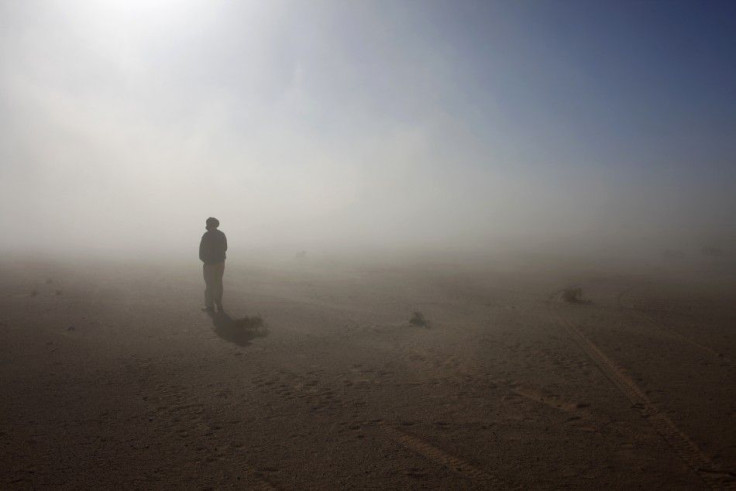Algeria Seizes Arms Believed to Have Been Smuggled in from Libya: Source

Algerian security forces have found a large cache of weapons, including shoulder-fired missiles, which they believe were smuggled in from neighboring Libya, a security source briefed on the discovery told Reuters on Saturday.
The find follows warnings from governments in the region that instability in Libya after the end of Moammar Gadhafi's rule is allowing weapons taken from Gadhafi's arsenal to fall into the hands of al-Qaida's North African branch and other insurgent groups across the Sahara.
The weapons cache was discovered in the desert about 40 miles south of In Amenas, an energy-producing Algerian region near the border with Libya, said the source, who spoke to Reuters on condition on anonymity.
The source said the cache was located following a tip by a smuggler who had been arrested. He said it contained a large quantity of arms, including the shoulder-launched missiles -- a weapon which, in some variations, could be used to bring down an aircraft.
This weapons seizure shows that the chaos in Libya is dangerous for the whole region, the source said.
There was no official confirmation of the discovery from the Algerian government, and there was no way of independently verifying the source's account.
Western security experts tracking arms that have disappeared from Gadhafi's looted arms depots say the shoulder-fired missiles -- also known as man-portable air defense systems, or MANPADS -- are one of their biggest concerns because they could be used with relative ease by insurgent groups.
Insurgency
Gadhafi's forces had about 20,000 of the missiles, according to a U.S. government task force trying to locate the missiles. The task force says most of the missiles are still inside Libya, in the hands of militias loosely allied to the interim leadership that took over after Gadhafi's rule was overthrown last year.
Security officials in North Africa say the worst-case scenario is that al-Qaida's North African wing, al-Qaida in the Islamic Maghreb (AQIM), could use one of the missiles to bring down a commercial airliner either landing or taking off at an airport somewhere in North Africa.
The group is waging a long-running insurgency against Algeria's government. It also carries out kidnappings, ambushes, and bomb attacks on Western targets in the Sahel, a huge volatile band that straddles the borders of Algeria, Libya, Mali, Mauritania, and Niger.
Speaking in Geneva last week, a U.N. panel of experts on Libya said the lack of strong central government control in Libya was making it difficult to track down the missing MANPADS.
People are concerned, and they are right, said one panel member, on condition of anonymity. There is certainly weapons traffic into the Sahel. It is a large desert area with limited [border] controls.
Algeria has been one of the region's most vocal states in warning of the security impact of Gadhafi's fall. The revolt has left huge quantities of weapons unsecured and a fragile interim government that is struggling to impose its authority and control the country's borders.
However, Libyan officials say they are working to secure the missing weapons and have accused Algeria of exaggerating the threat.
They say its neighbor was against the revolt in Libya and is now using the security issue to undermine the new leadership in Tripoli, allegations that Algerian officials deny.
(Additional reporting by Stephanie Nebehay in Geneva; Writing by Christian Lowe; Editing by Alison Williams)
© Copyright Thomson Reuters {{Year}}. All rights reserved.






















